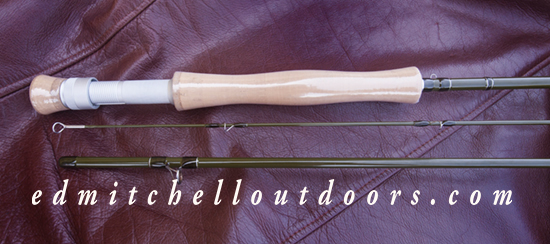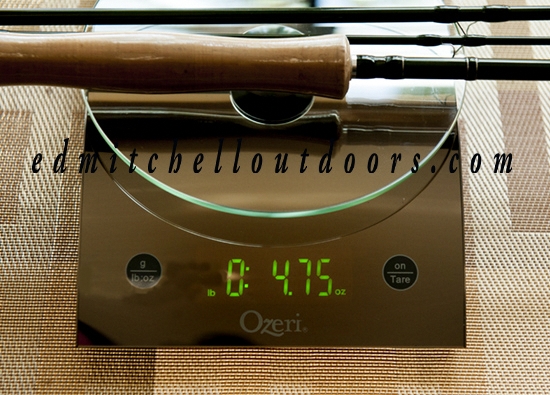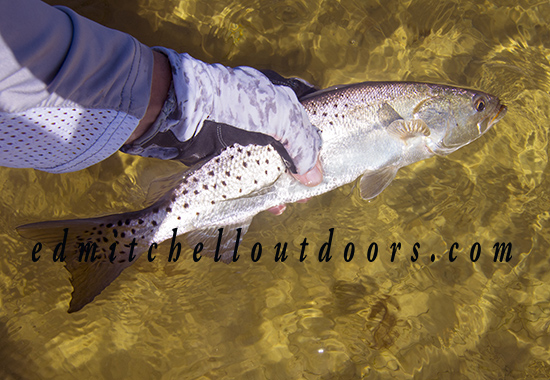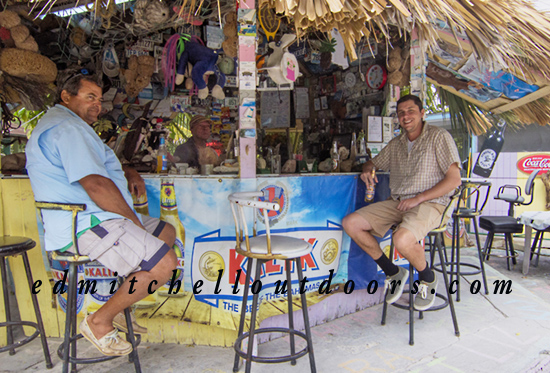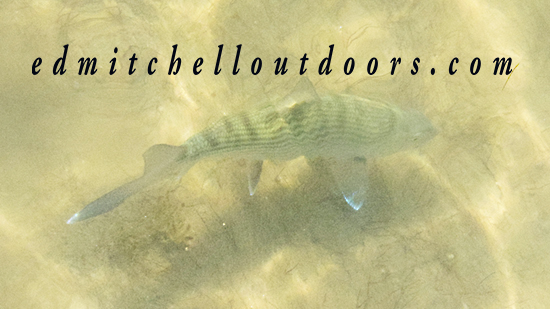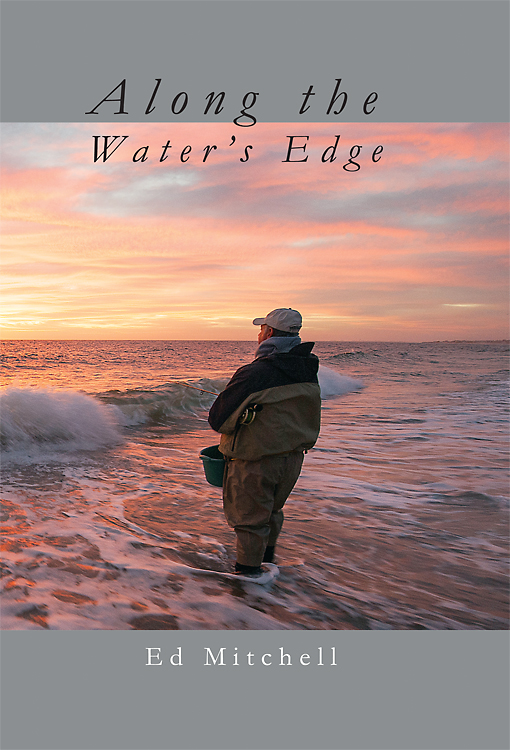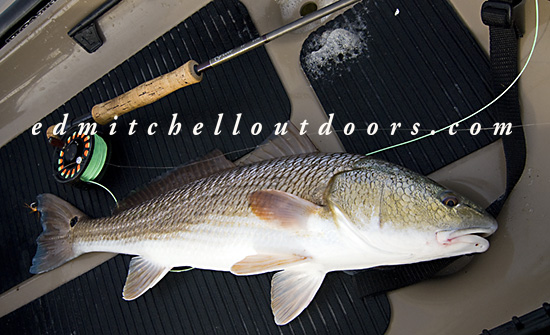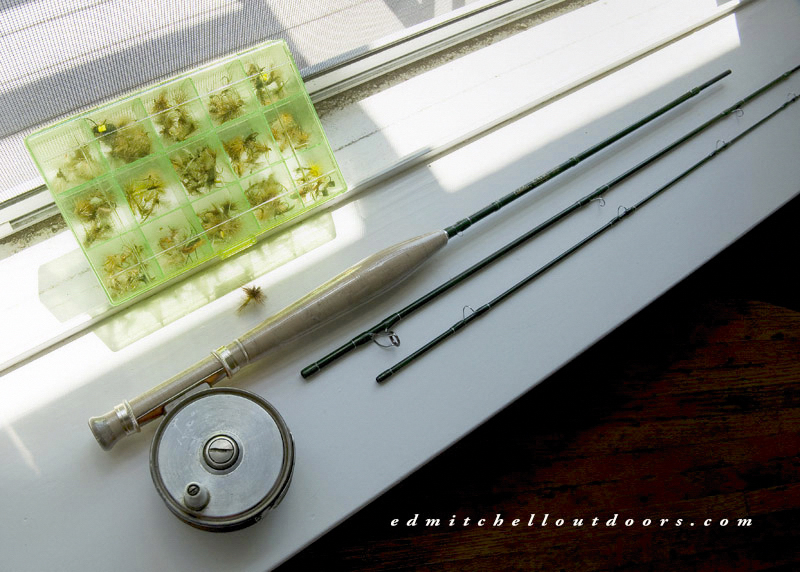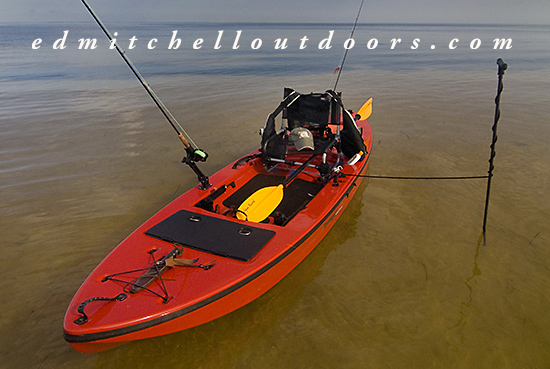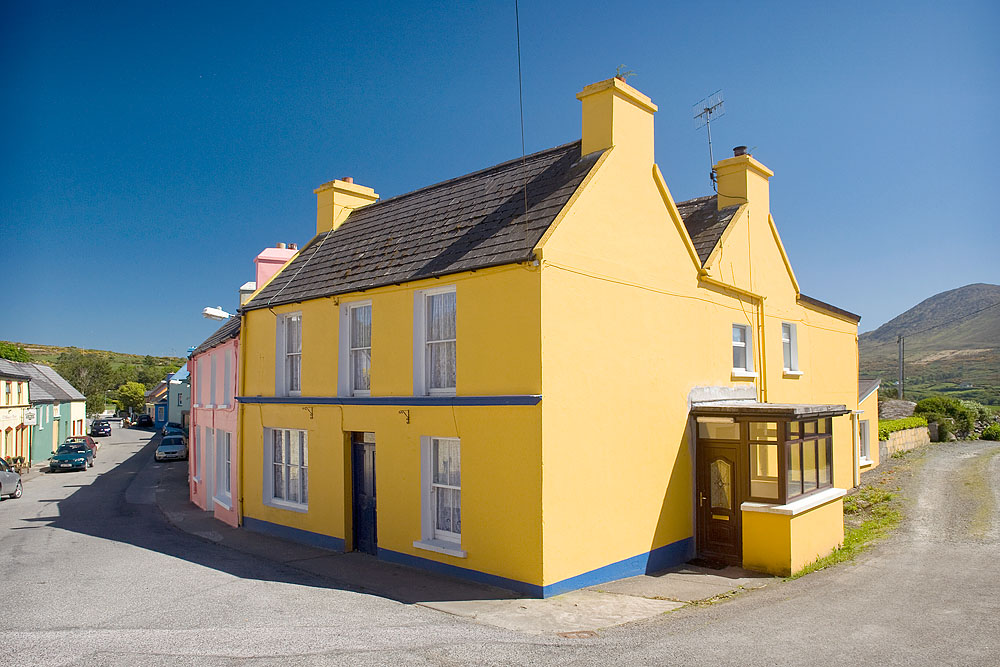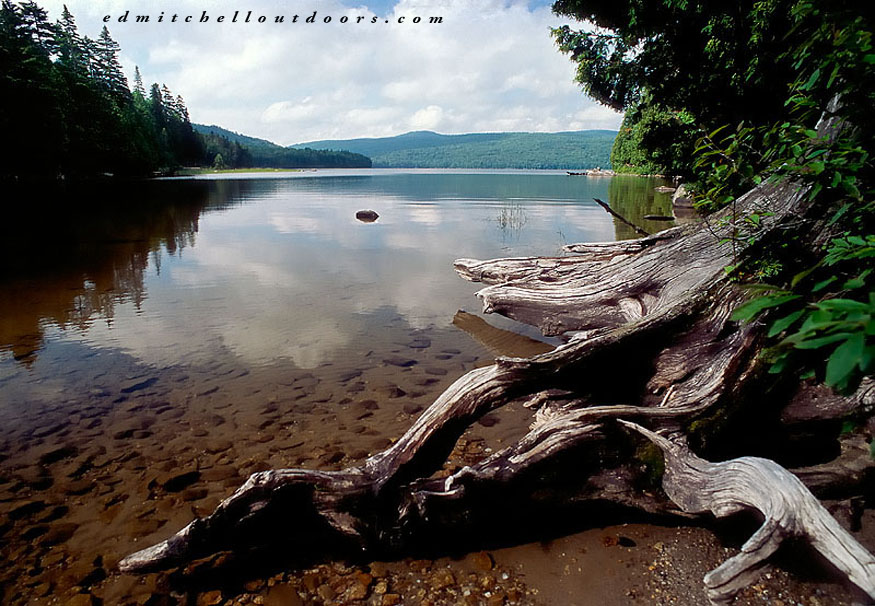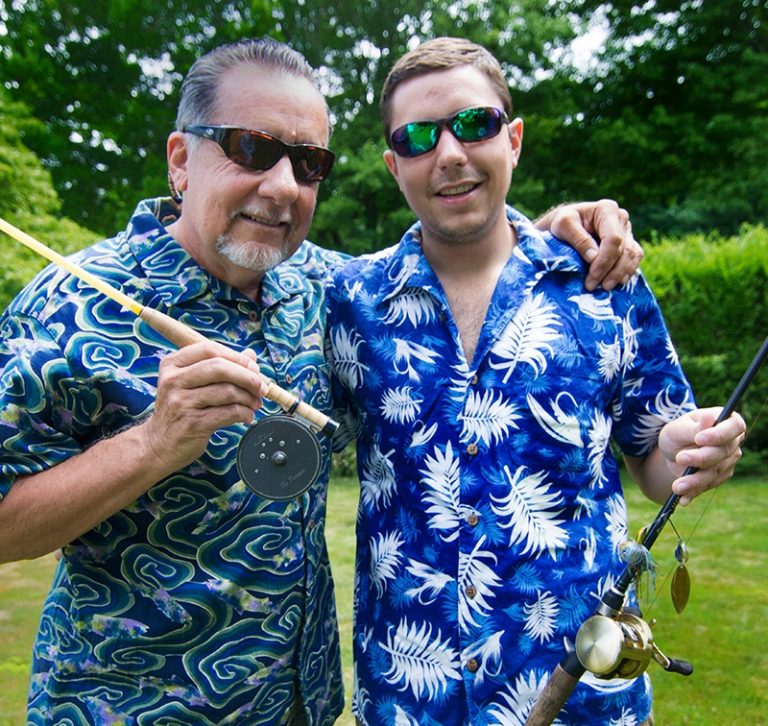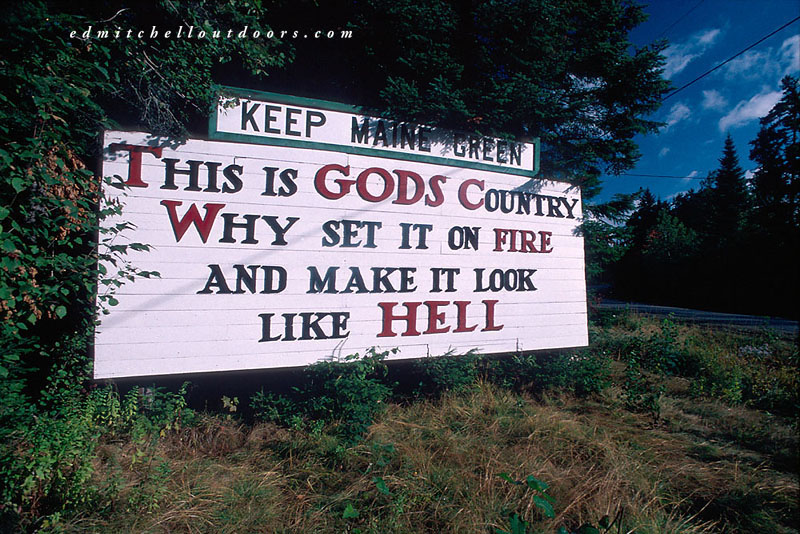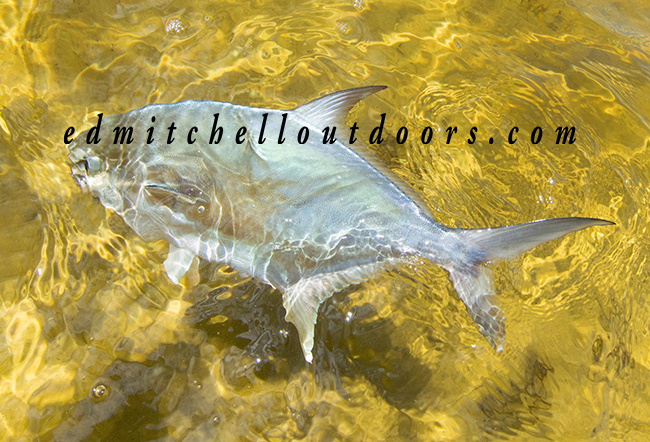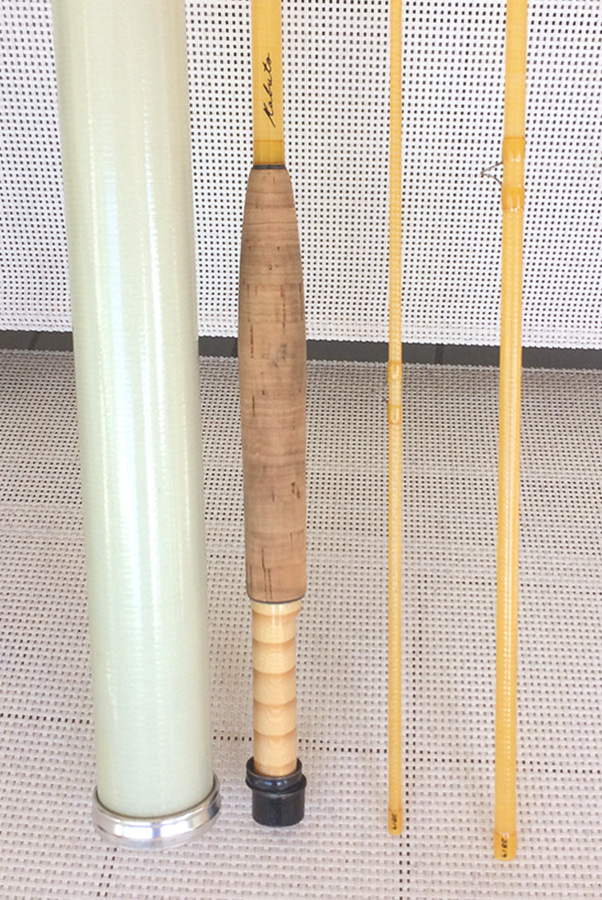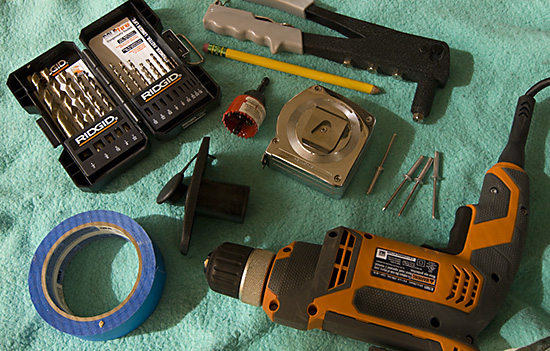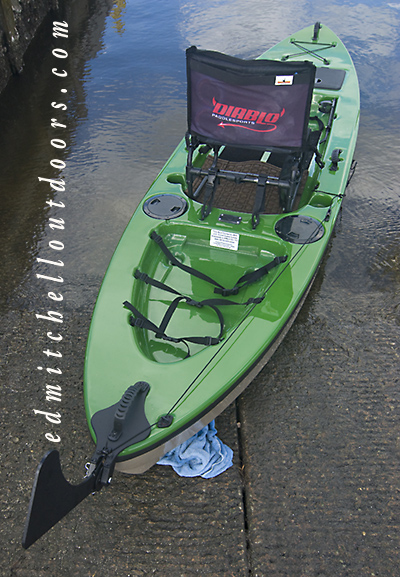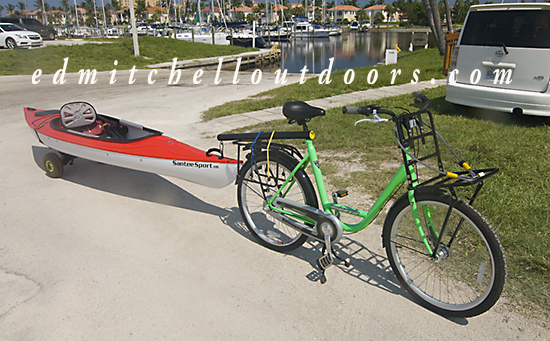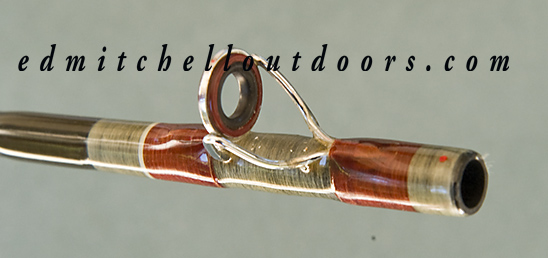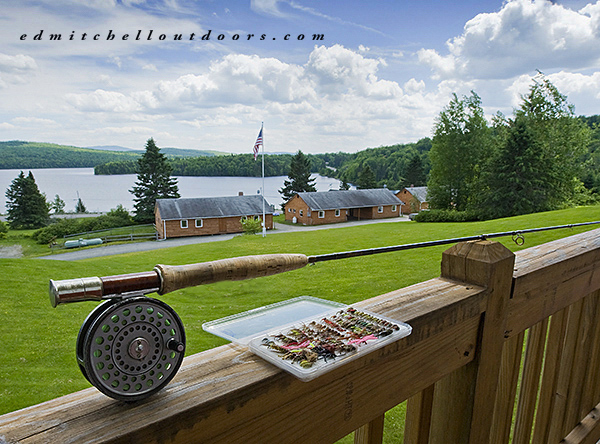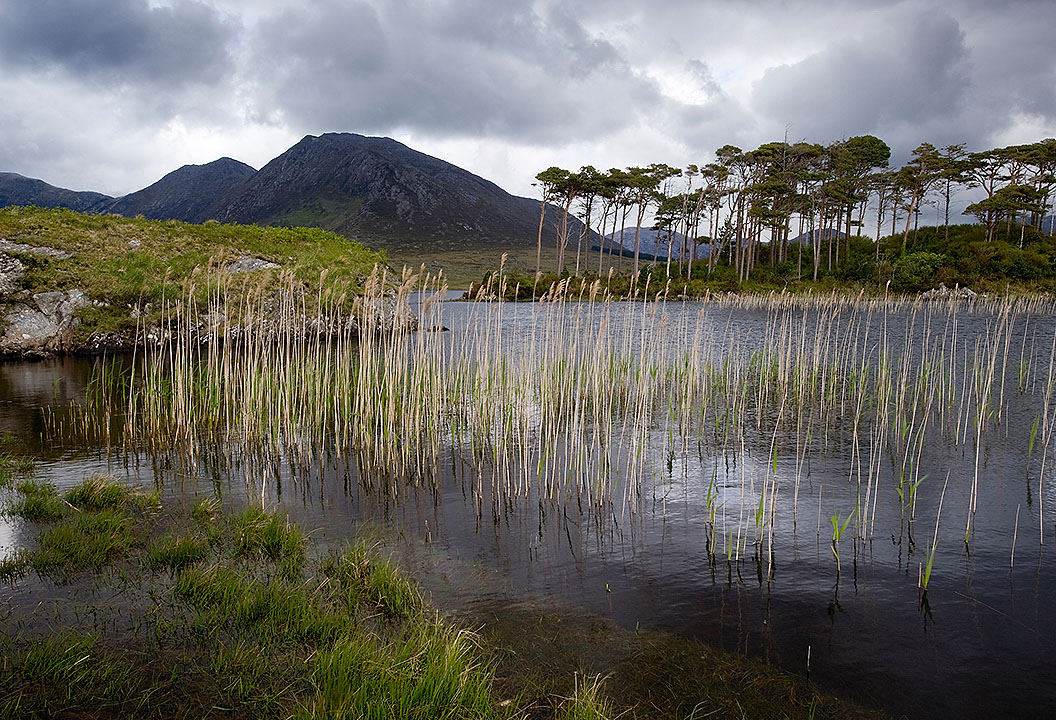Part Two In the last post we looked at the makeup and appearance of Cabela’s CGR, 7′ 6″, 7/8-weight fly rod. Now its time to put a reel and line on it. In Part Three, I add a fly and take the rod to the water. We’re bound to learn more.
I tried several reels to see how well they fit the reel seat. Those reels included a Hardy Princess, a Ross Canyon, a Pate Bonefish, and a Tibor Riptide. All were secure. However I noticed something right off. Even though this rod is 4.75 ounces, its short length makes it very light in the hand. But heavy reels such as the Pate and the Tibor quickly made it feel unbalanced. If you need a large diameter reel look for a light one. ( Medalist 1498?)
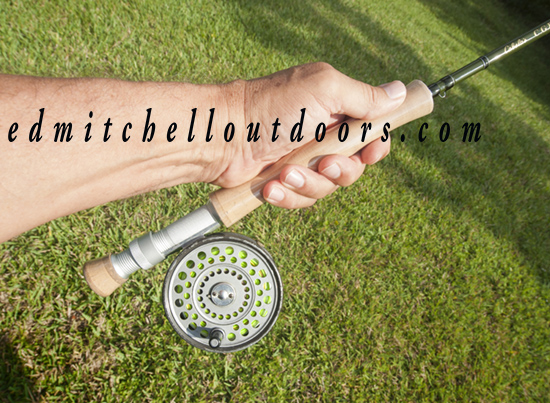 All my casting was done with a leader and a piece of yarn. I had a 10 knot crosswind tailing from the rear. Nothing too serious. Full-flex rods will usually accommodate a fairly wide range of line weights. So I began with a WF 5F. The action was medium-fast and the rod felt underlined, but would work if I pushed a little. Next came a WF6F. The rod was easier to work, but still cast off the tip-section.
All my casting was done with a leader and a piece of yarn. I had a 10 knot crosswind tailing from the rear. Nothing too serious. Full-flex rods will usually accommodate a fairly wide range of line weights. So I began with a WF 5F. The action was medium-fast and the rod felt underlined, but would work if I pushed a little. Next came a WF6F. The rod was easier to work, but still cast off the tip-section.
With a WF 7F the rod slowed, working into the midsection, and felt very much at home. With a single backcast, it easily launched 70′ of line, plus leader. Nice. A WF8F forced the rod to flex into the butt a bit. If you’re looking for a traditional glass rod feel, this might be your baby. (A fly will slow things further). Lastly I tried a WF9F. Slower yet, the rod nevertheless cast surprisingly well, especially in close.
Short rods are very accurate, and this one is no exception. Its capable of pinpoint deliveries. And at 7’6″ you can make those deliveries low to the water. As a result, from a boat this rod will be a good choice when working the wooded shoreline of a lake. You’ll be able to drop flies under tree limbs all day long.

